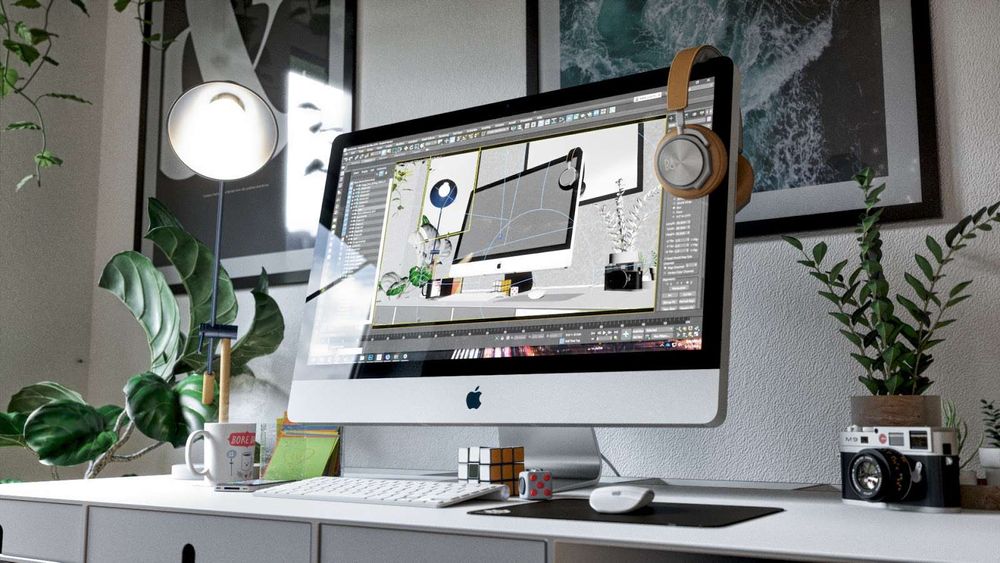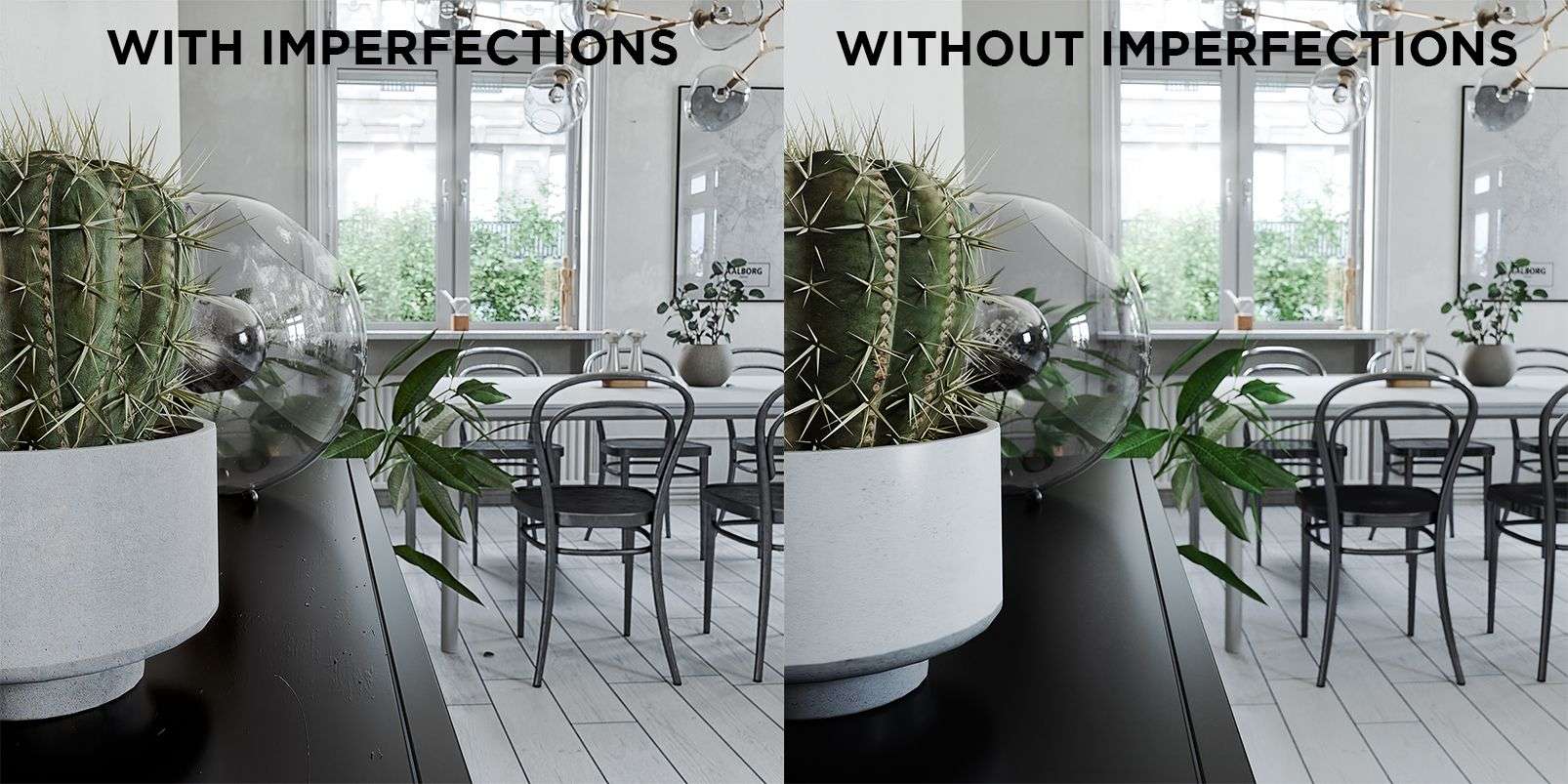
There is no magic tool, software or render engine that will make realistic interior renders. But there are a lot of general tips and rules that can speed up your workflow and improve the realism of your renders.
In this blog post, I will share the workflow and rules that I used to make the image above, which is the industry standard for archviz.
I used FStorm for the image below, which is my favorite render engine. I use Vray and Corona too as they are excellent engines. All of these can produce photorealistic images.
Use downloaded assets
When I first started making interiors, I made all the models in my scenes. Not only did it take a ton of time to make them, but it also impacted my creativity as I couldn't just drag and drop whatever I wanted into my scene.
However, I would still recommend practicing modelling. Most archviz firms use downloaded models, but sometimes clients request specific models that you don't have. So, it's still important that you are able to model and texture well.
Also, make sure that the models you use are of high quality. This will be more or less noticeable depending on their location in the scene, but it’s something that can make or break realism.
Sometimes downloaded models will require further tweaking of materials/geometry to look photorealistic.
Asset Browser
I recommend getting the asset browser “Connecter”. It's elegant, easy to use, good for organization, and completely free.
Bevel everything!
Nothing in the world is 100% sharp. Everything has some kind of bevel to it. It’s a minor detail, but minor details are what makes your image look realistic.
Model the entire room
I see a lot of 3D Artists that don’t model the entire room for their interior projects. For example, it’s common to see people using only a floor and a wall. This might work for an artistic look, but if you’re trying to make a realistic render you need to model the whole interior.
Light bounces off and around all surfaces, and the lighting in your scenes will look off if you don't have all walls, floors and roofs in your scene.
Pay attention to texture tiling
Something that can make the scene look off is texture tiling. I created the scene below when I was new to archviz and it's very obvious to see the tiling in the plaster material on the wall. It makes the texture look very repetitive.
Lighting
One of the most important aspects of creating a realistic interior is lighting. For all my renders I use HDRI Skies. I like overcast skies as they give a nice Scandinavian/natural vibe.
Make sure to use light portals if your render engine requires that, and also make sure that the sun is rotated so it’s pointing at the window. You can also get some pretty nice results using light planes but I personally prefer HDRI lighting.
I would also recommend looking at real images a lot. And really study what the lighting in those scenes looks like. for example in a lot of Scandinavian interior images from real life. The windows are always blown-out with white light. In a lot of cases. Which is because the shutter speed on the camera is turned down really low. and it capture a lot of light from the outside. which makes the windows let a lot of light into the scene
Scale
Make sure to set your 3dsMax to use the correct dimensions. I personally use centimeters for interiors and meters for exteriors. If something looks unnaturally big or small it can make the scene look off.
Abnormally large wall sockets or too small door handles can capture the viewer’s attention for the wrong reasons and dominate their focus. These errors really drag your scene down.
Composition
I recommend picking up photography as a hobby, even if you just use your phone. It can help you get a feel of what works in composition and what doesn't.
It would also help with learning camera settings, which is a useful skill for 3D. I suggest using something basic like rule of thirds.
Inspiration
If you are a student or hobbyist and just want to make something awesome for your portfolio. I would recommend getting a pinterest account. It's a really useful site for gathering inspiration. And getting a feel for what's trendy and which elements go well together. You can also search for specific styles on the site. Or just specific furniture.
Imperfections
Something that can really make a scene stand out from the rest is imperfections. In real life everything got imperfections nothing is perfect. But in 3D everything is perfect. And close up it can be really noticeable. In the Archviz industry we generally don't do this much Unless we make close-up shots too
But if you are making a piece for your portfolio. I think its defiantly worth spending the extra time adding imperfections to your scene
In the mage below from one of my recent scenes. i made a comparison of what this close-up shot looks with and without imperfections. Which is most noticeable on the wooden plate. and the fingerprints on the glass lamp. I also added a small leaf on the floor next to the chair. and on the table too next to the plant. I also changed the texture on the cactus planter. Since it looked quite low-res up close

Pay attention to colors
In the image above i also changed the leafs colors. to a more de-saturated dark green. Which i think looks a lot better. Having really colorful objects in your scene compared to the rest of the scene. can really break the aesthetics of the render
Another thing is to never make any Materials too white/black never make a material 255 White or 0 Black. If you want to achieve a very white interior for example. Make the lightning very white and not the materials
Get feedback
Even the best of the best artist might not spot something right away that could look off in their renders. Which is why its really important go get feedback on your project. Sometimes i even show my little brother who don't do Archviz my renders. and he has given me a lot of useful points that could improve my render. The person dosent have to understand 3D To give feedback since if you are just trying to make a realistic image. They should be able to spot what looks the most off. But getting feedback from people who do 3D is also really helpful. i would suggest joining some Facebook groups or forums and post your work when you are creating it. and not just when you are done. so you can recive feedback along the way

Useful scripts
Floorgenerator
Something i would really recommend getting is FloorGenerator it makes actual floor boards in your scene and it looks a lot better than just a flat texture on a plane. you can also have a lot of very high Quality textures spread out on each floor board. It can also be really useful for creating tiles for bathrooms or Kitchen tiles. it can also used to create roofs for houses/apartments
RelinkBitmaps
Relinksbitmaps is super useful for linking textures to your 3DSMAX Save. as it can automaticly search entire drives without you having to go into specific folders and link each texture. It saves a lot of time
Itoo Forestpack
Is a scatter program which is generally used to scatter vegetation. If you are making a interior with a lot of windows. or maybe your interior have a balcony too. Then Forest pack is super great for making some really awesome outdoor areas. You can basically make a entire forest with the click of a button
I hope you enjoyed reading my blog post. and hopeful you learned something new!
